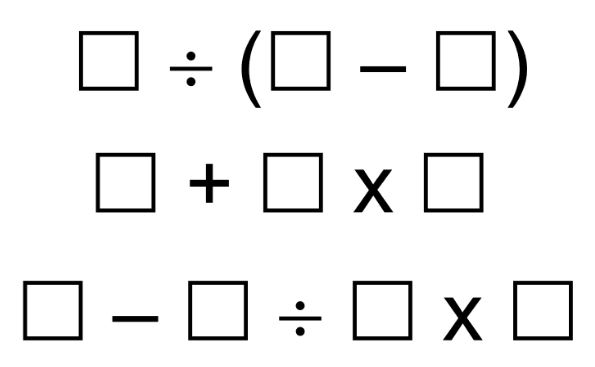This instructional plan is based on the MTLT article "Persevering through Problem Solving with Open Middle" by Stephen L. Caviness, Crystal Wallen, and Lorraine Stewart. In this lesson, students will engage in a low-floor, high-ceiling Open Middle task that challenges students to think critically about order of operations. Suggestions for facilitating this lesson based on Building Thinking Classrooms are provided, as well as extension questions and questions for reflection.
Assigning Groups:
- Begin this lesson by visibly and randomly grouping students into groups of three. This is easiest to do with a stack of playing cards pre-organized to have three of each type (e.g., three aces, three kings, etc.). This card determines the table where they will sit and the group they will work with throughout the lesson. (Limit groups to three students.)
- Assign roles to students within their groups. The two roles are Muscles and Brains. There should be one Muscle and two Brains per group. Remind students of their designated roles during collaborative work on the vertical, non-permanent surfaces. The Muscle is responsible for writing the ideas of other group members. The Brains are responsible for sharing the ideas. If a Muscle has an idea that they want the group to scribe, they need to switch roles to become a Brain, and the Brain would then become a Muscle. (Students are told not to erase their work; we want to see all solutions, even those that do not work out so that we can reflect on them in our debrief.)
Lesson:

- Display the Open Middle prompt on the board and explain its parameters to the class.
- Groups of three work on the vertical non-permanent surfaces and begin solving the Open Middle prompt. Students should try different combinations of numbers.
- As students work within their groups, circulate the room asking probing questions.
- Allow students to work for 15- 20 minutes. See extensions below if needed.
- After the allotted time, have students remain standing as a group in front of their work. Facilitate a whole group conversation based on students' attempts at their boards, highlighting moments of struggle and creative solutions.